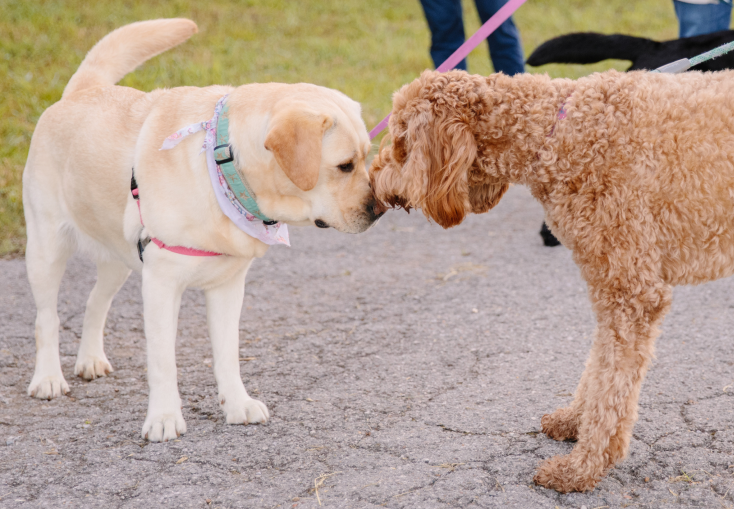Nom Nom Blog
We're Here For Dog Parents: Understanding Your Pup's Physical Cues
Dog parents go the extra mile to support their pup’s needs, from satisfying their nutritional requirements and taste preferences, to obediently fetching their ball—again and again—from under the couch. That’s because they’re consciously tuning in to their pup’s unique ways of expressing themselves, and responding with clarity and empathy.
Since dogs primarily communicate through body language, this means that every part of their body relays a message. A mere tilt of their head can signal everything from an adorable show of curiosity to an attempt to hear more clearly. A play bow is a delightful invitation to engage. Even their ears are expressive! Recognizing these signals can help you understand your dog’s feelings and intentions, which helps to further enhance communication and strengthen your interactions.
Want to learn more about what their tail is telling you? We’re here for you, dog (parents).
_______________________________________________________________________________________________________________________________________
HOW TO READ YOUR DOG'S MIND (AND BODY LANGUAGE)
TAIL MOVEMENTS
The tail is one of the most expressive parts of a dog's body.
- Wagging: A wagging tail often signifies happiness, but the speed and position can alter its meaning. A slow wag might indicate hesitancy or uncertainty, while a rapid wag usually shows excitement.
- High Tail: When a dog holds its tail high, it can be a sign of confidence and alertness.
- Low Tail: A tail held low or tucked between the legs typically indicates fear, submission, or anxiety.
EAR POSITIONS
A dog's ears can reveal a lot about their mood and intentions.
- Erect Ears: Ears that are up and forward suggest that the dog is attentive and alert.
- Flattened Ears: Ears laid back against the head can signal submission or anxiety.
- Neutral Ears: When a dog's ears are in their natural position, it usually indicates a relaxed state.
EYES AND GAZE
The eyes are a window to a dog's soul, conveying a range of emotions.
- Soft Eyes: Relaxed, soft eyes with normal blinking suggest a calm and content dog.
- Hard Stare: A direct, unblinking stare can be a sign of aggression or confidence.
- Whale Eye: When the whites of a dog's eyes are visible, it may indicate fear or discomfort.
MOUTH EXPRESSIONS
A dog's mouth can express joy, stress, or a challenge.
- Relaxed Mouth: An open mouth with a relaxed tongue usually means the dog is happy and comfortable.
- Panting: While panting can be a normal way to cool down, excessive panting might indicate stress or pain.
- Bared Teeth: Showing teeth can be a warning sign of aggression, but some dogs actually do smile!
POSTURE
The overall posture of a dog can indicate their emotional state and intentions.
- Play Bow: When a dog lowers its front legs while keeping its rear up, it’s an invitation to play.
- Stiff Body: A rigid, tense body often signals alertness.
- Cowering: Lowering the body close to the ground, sometimes with a tucked tail, indicates fear or submission.
OTHER SIGNALS
Dogs use a combination of signals to communicate more complex messages.
- Yawning: While yawning can indicate tiredness, it's also a way for a dog to reset their emotional state.
- Licking Lips: This can be a sign of stress or submission.
- Paw Lifting: A raised paw can indicate uncertainty or anticipation.
READING THE CONTEXT
Understanding a dog's body language requires considering the context in which behaviors occur. For example, a dog wagging its tail might be happy to see you, but the same wag in a different context, like meeting a new dog, might indicate a different emotion. There are no one-size-fits all behaviors when it comes to dogs, and its important to understand your pups unique physical expressions to best acknowledge their needs and emotional state.
______________________________________________________________________________________________________________________________________


